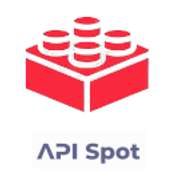Wikipedia for Web APIs. Repository of API definitions in OpenAPI format. **Warning**: If you want to be notified about changes in advance please join our [Slack channel](https://join.slack.com/t/mermade/shared_invite/zt-g78g7xir-MLE_CTCcXCdfJfG3CJe9qA). Client sample: [[Demo]](https://apis.guru/simple-ui) [[Repo]](https://github.com/APIs-guru/simple-ui)
Apptigent PowerTools Developer Edition is a powerful suite of API endpoints for custom applications running on any stack. Manipulate text, modify collections, format dates and times, convert currency, perform advanced mathematical calculations, shorten URL's, encode strings, convert text to speech, translate content into multiple languages, process images, and more. PowerTools is the ultimate developer toolkit.
AppVeyor is a hosted continuous integration service which runs on Microsoft Windows. The AppVeyor REST API provides a RESTful way to interact with the AppVeyor service. This includes managing projects, builds, deployments, and the teams that build them. Additional help and discussion of the AppVeyor REST API is available at http://help.appveyor.com/discussions This Swagger definition is an **unofficial** description of the AppVeyor REST API maintained at https://github.com/kevinoid/appveyor-swagger Please report any issues or suggestions for this Swagger definition at https://github.com/kevinoid/appveyor-swagger/issues/new #### API Conventions Fields which are missing from update operations (`PUT` requests) are typically reset to their default values. So although most fields are not technically required, they should usually be specified in practice.
Appwrite backend as a service cuts up to 70% of the time and costs required for building a modern application. We abstract and simplify common development tasks behind a REST APIs, to help you develop your app in a fast and secure way. For full API documentation and tutorials go to [https://appwrite.io/docs](https://appwrite.io/docs)
Appwrite backend as a service cuts up to 70% of the time and costs required for building a modern application. We abstract and simplify common development tasks behind a REST APIs, to help you develop your app in a fast and secure way. For full API documentation and tutorials go to [https://appwrite.io/docs](https://appwrite.io/docs)
Containers are virtual software objects that include all the elements that an app needs to run. A container has the benefits of resource isolation and allocation but is more portable and efficient than, for example, a virtual machine.
This documentation describes the IBM Containers API, which is based on the Docker Remote API. The API provides endpoints that you can use to create and manage your single containers and container groups in Bluemix. Endpoints are summarized under the following tags:
- **Authentication**: Retrieve and refresh your TLS certificates.
- **Private Docker images registry**: Create your own private Docker images registry in Bluemix by setting a namespace for your organization.
- **Images**: View, build, and push your images to your private Bluemix registry so you can use them with IBM Containers. You can also scan your container images with the Vulnerability Advisor against standard policies set by the organization manager and a database of known Ubuntu issues.
- **Single Containers**: Create and manage single containers in Bluemix. Use a single container to implement short-lived processes or to run simple tests as you develop an app or service. To make your single container available from the internet, review the `Public IP addresses` endpoints.
- **Container Groups**: Create and manage your container groups in Bluemix. A container group consists of multiple single containers that are all created from the same container image and as a consequence are configured in the same way. Container groups offer further options at no cost to make your app highly available. These options include in-built load balancing, auto-recovery of unhealthy container instances, and auto-scaling of container instances based on CPU and memory usage. Map a public route to your container group to make your app accessible from the internet.
- **Public IP addresses**: Use these endpoints to request public IP addresses for your space. You can bind this IP address to your container to make your container accessible from the internet.
- **File shares**: Create, list and delete file shares in a space. A file share is a NFS storage system that hosts Docker volumes.
- **Volumes**: Create and manage container volumes in your space to persist the data of your containers.
Each API request requires an HTTP header that includes the 'X-Auth-Token’ and 'X-Auth-Project-Id’ parameter.
- **X-Auth-Token**: The JSON web token (JWT) that you receive when logging into the Bluemix platform. It allows you to use the IBM Containers REST API, access services, and resources. Run `cf oauth-token` to retrieve your access token information.
- **X-Auth-Project-Id**: The unique ID of your organization space where you want to create or work with your containers. Run `cf space
## Important An **[API key](https://chompthis.com/api/)** is required for access to this API. Get yours at **[https://chompthis.com/api](https://chompthis.com/api/)**. ### Getting Started * **[Subscribe](https://chompthis.com/api/#pricing)** to the API. * Scroll down and click the "**Authorize**" button. * Enter your API key into the "**value**" input, click the "**Authorize**" button, then click the "**Close**" button. * Scroll down to the section titled "**default**" and click on the API endpoint you wish to use. * Click the "**Try it out**" button. * Enter the information the endpoint requires. * Click the "**Execute**" button. ### Example * Branded food response object: **[View example »](https://raw.githubusercontent.com/chompfoods/examples/master/branded-food-response-object.json)** * Ingredient response object: **[View example »](https://raw.githubusercontent.com/chompfoods/examples/master/ingredient-response-object.json)** * Error response object: **[View example »](https://raw.githubusercontent.com/chompfoods/examples/master/error-response-object.json)** ### How Do I Find My API Key? * Your API key was sent to the email address you used to create your subscription. * You will also find your API key in the **[Client Center](https://chompthis.com/api/manage.php)**. * Read **[this article](https://desk.zoho.com/portal/chompthis/kb/articles/how-do-i-find-my-api-key)** for more information. ### Helpful Links * **Help & Support** * [Knowledge Base »](https://desk.zoho.com/portal/chompthis/kb/chomp) * [Support »](https://chompthis.com/api/ticket-new.php) * [Client Center »](https://chompthis.com/api/manage.php) * **Pricing** * [Subscription Options »](https://chompthis.com/api/) * [Cost Calculator »](https://chompthis.com/api/cost-calculator.php) * **Guidelines** * [Terms & License »](https://chompthis.com/api/terms.php) * [Attribution »](https://chompthis.com/api/docs/attribution.php)











